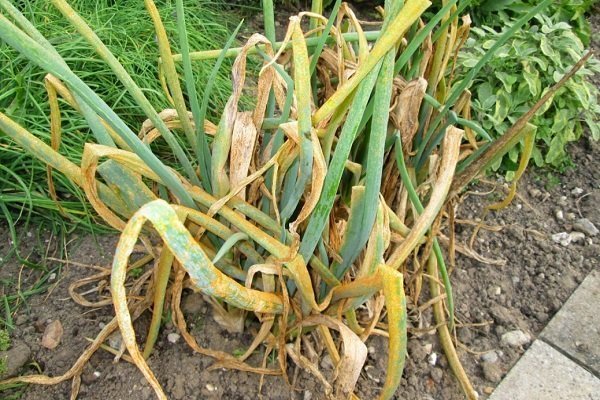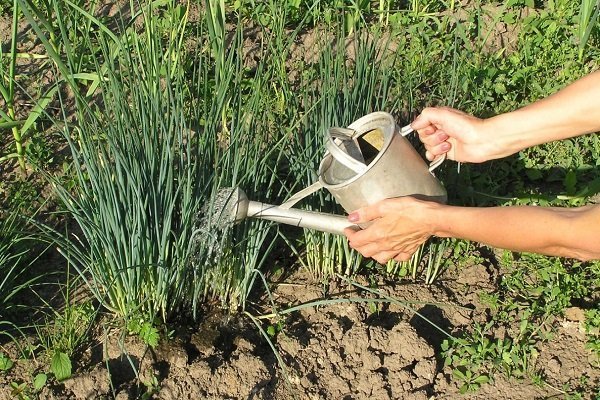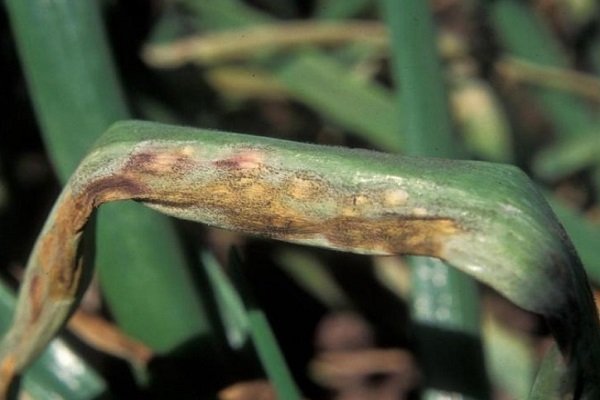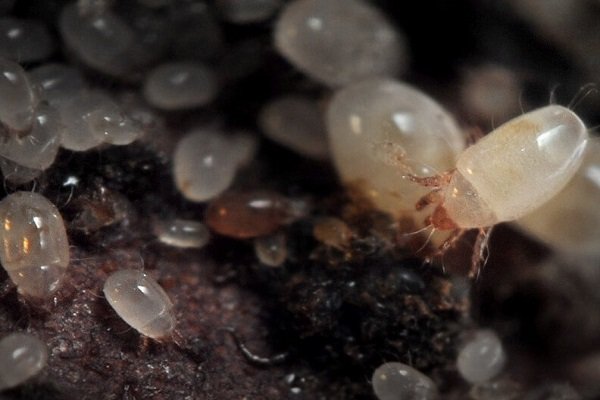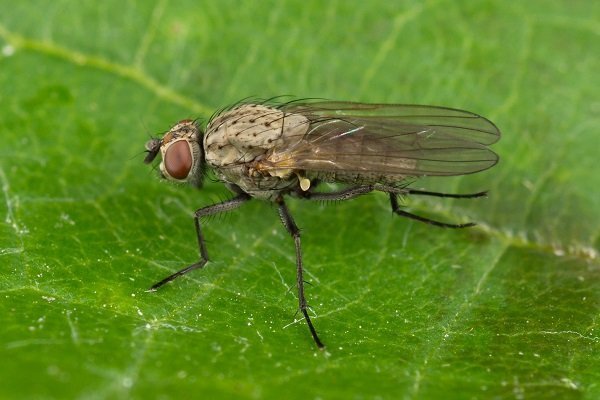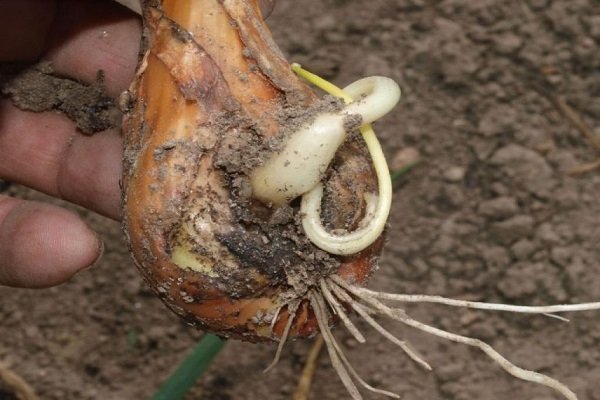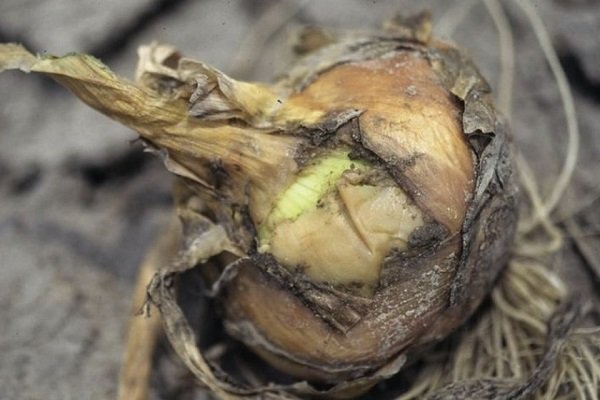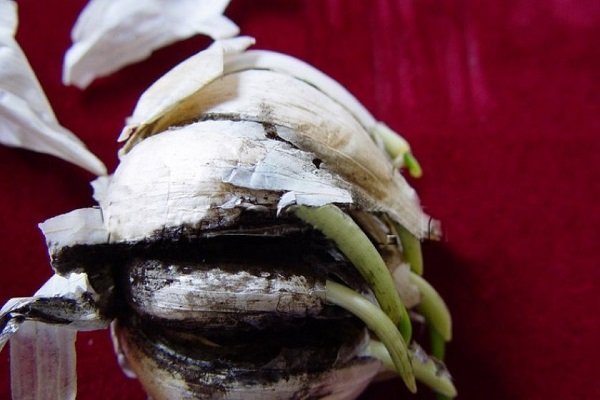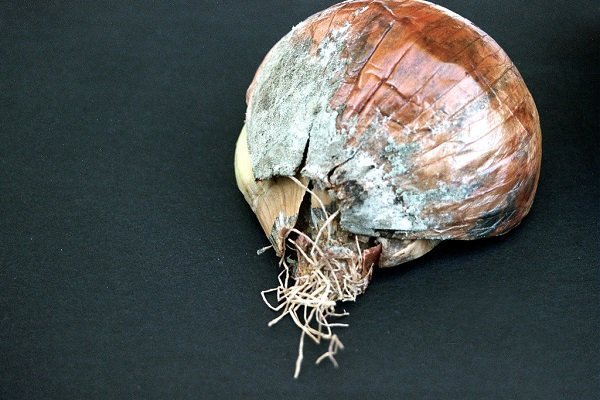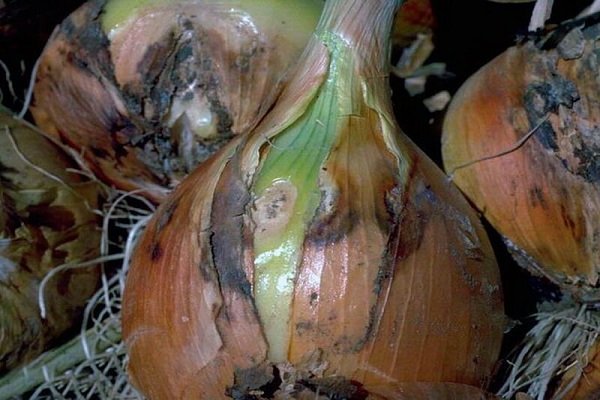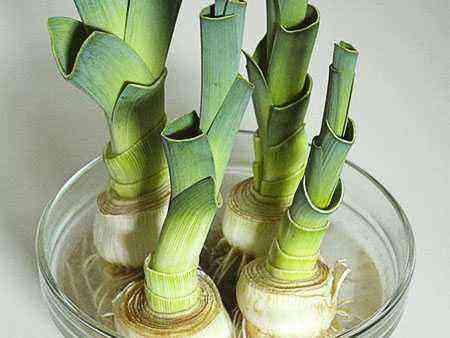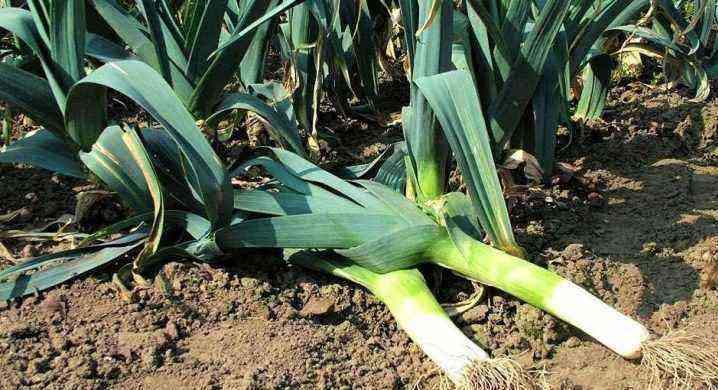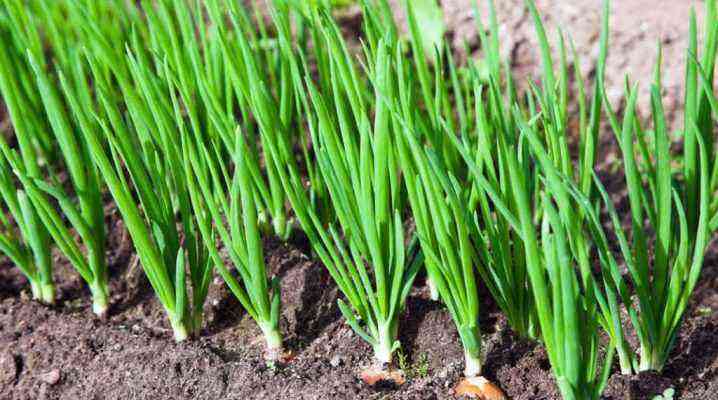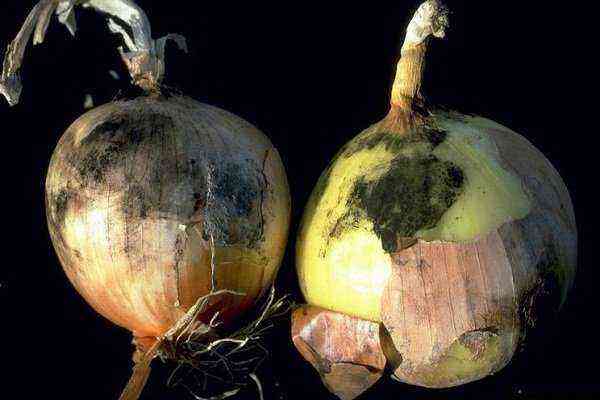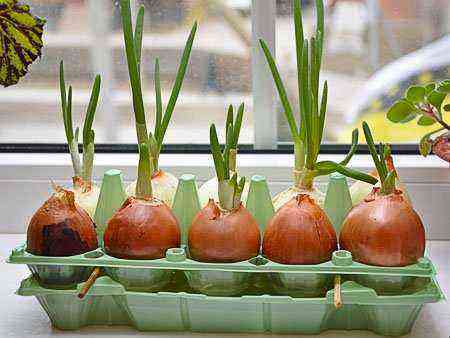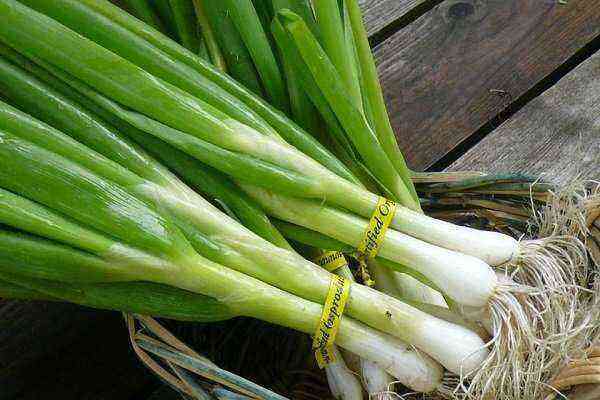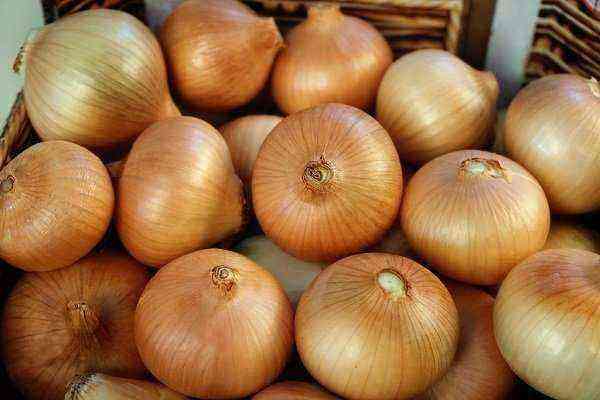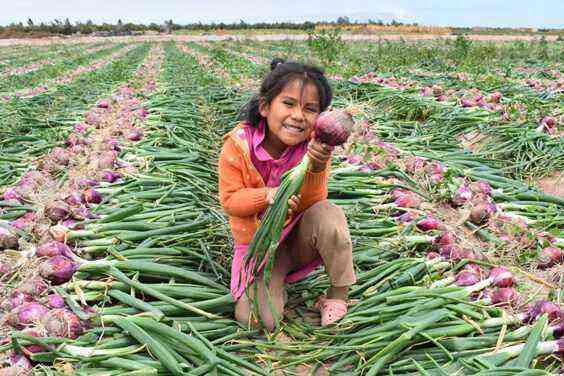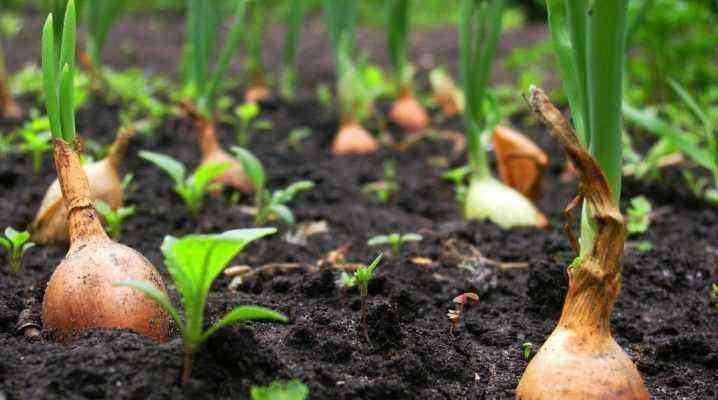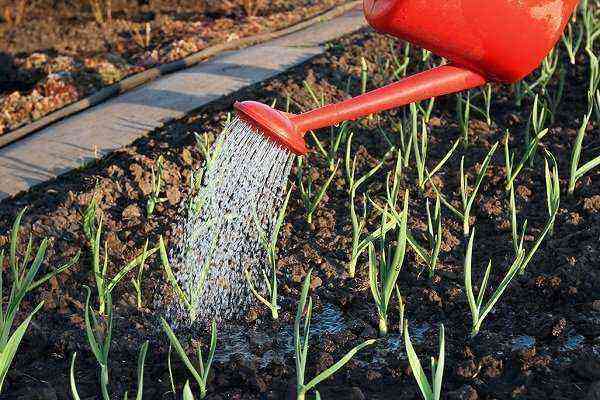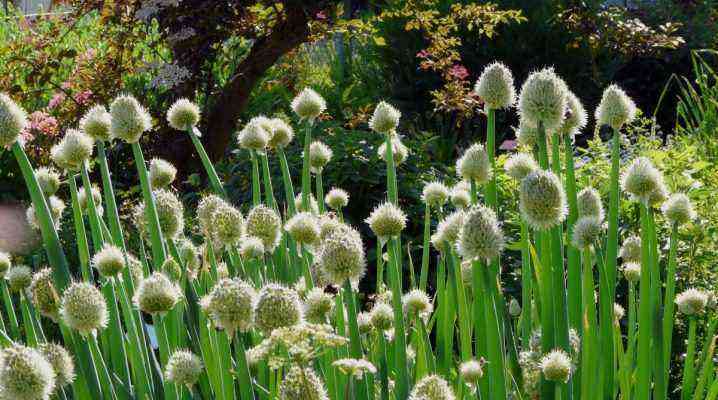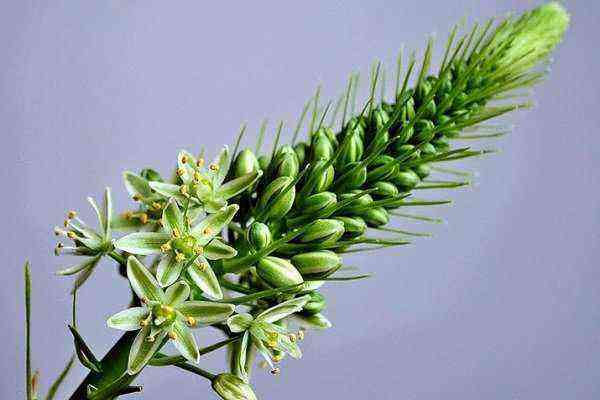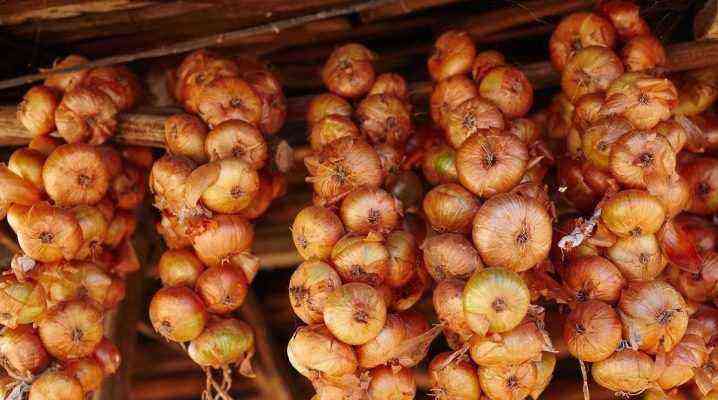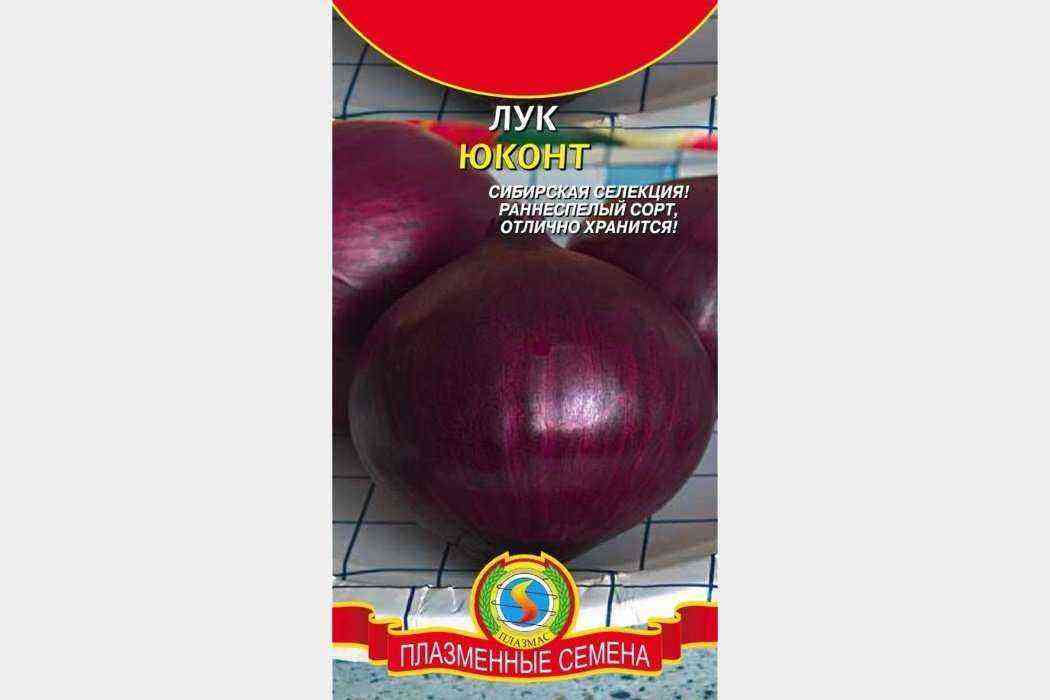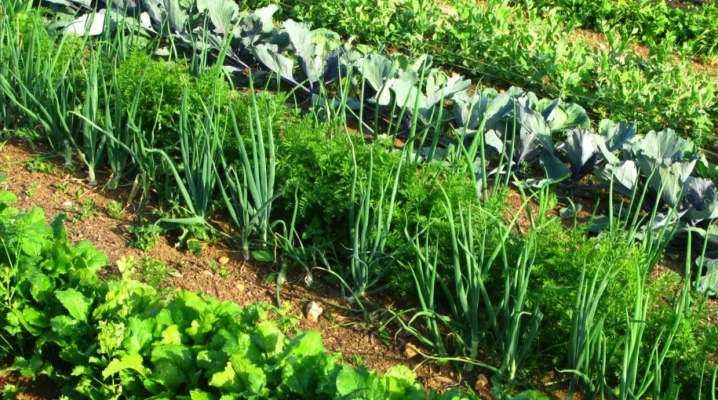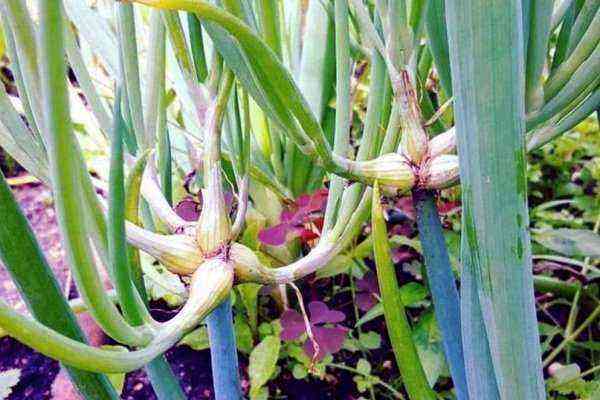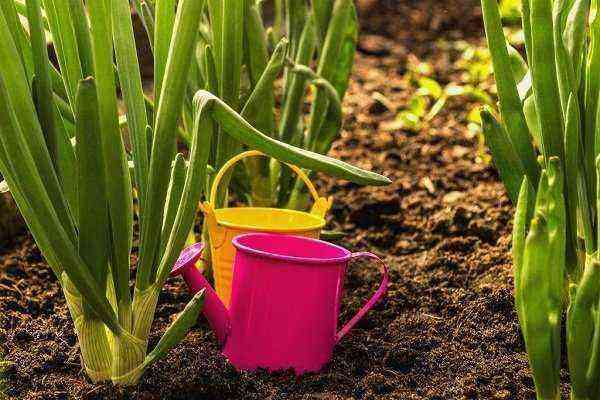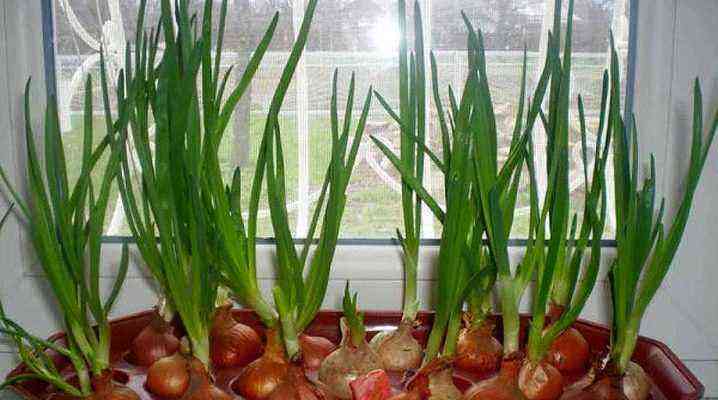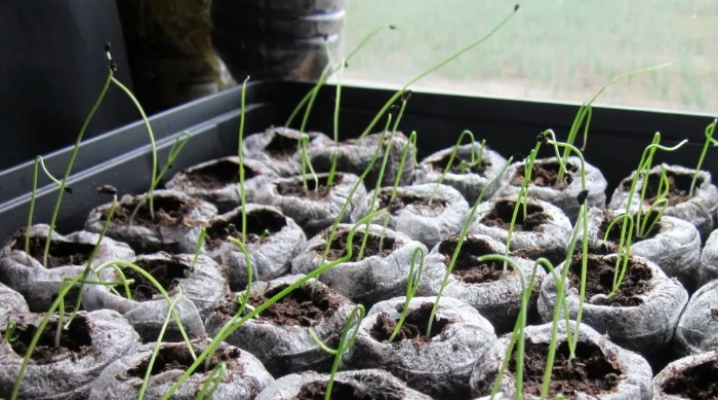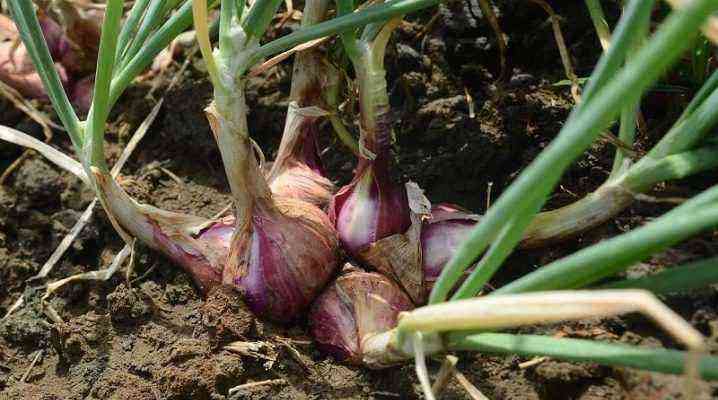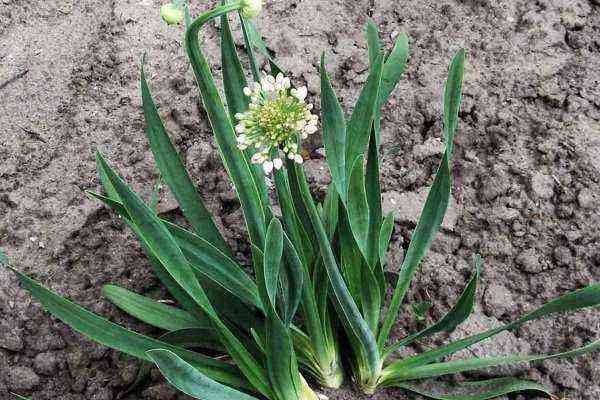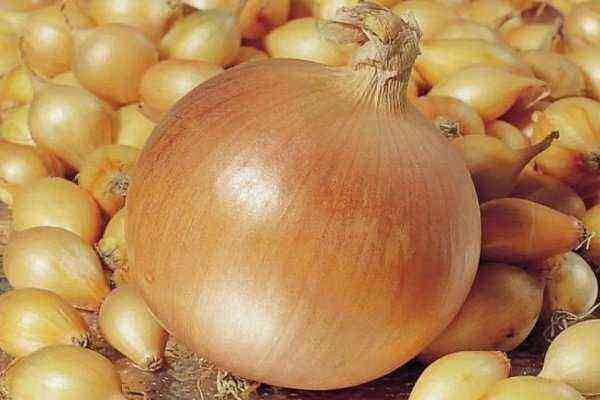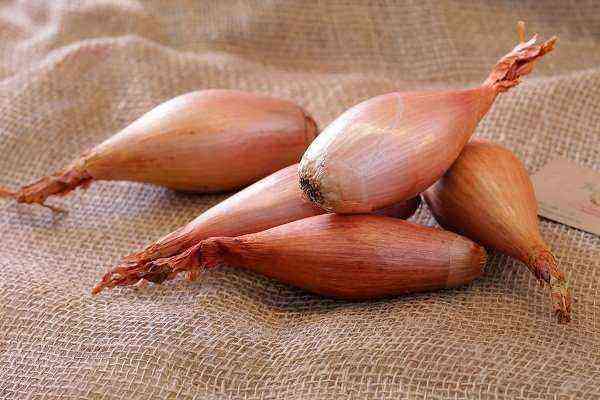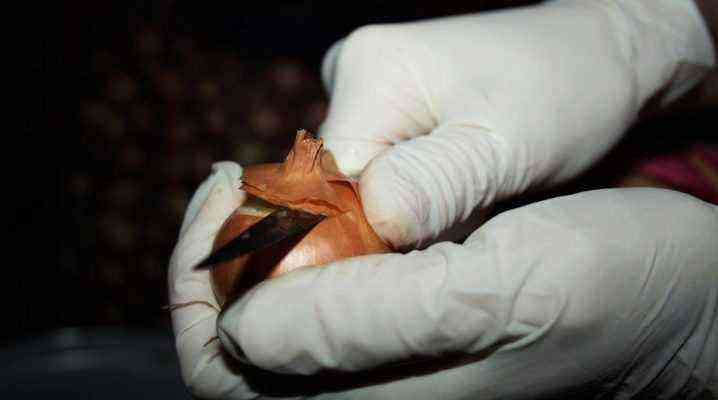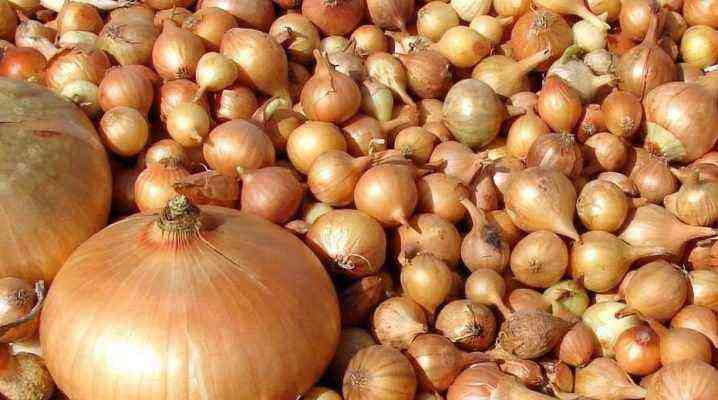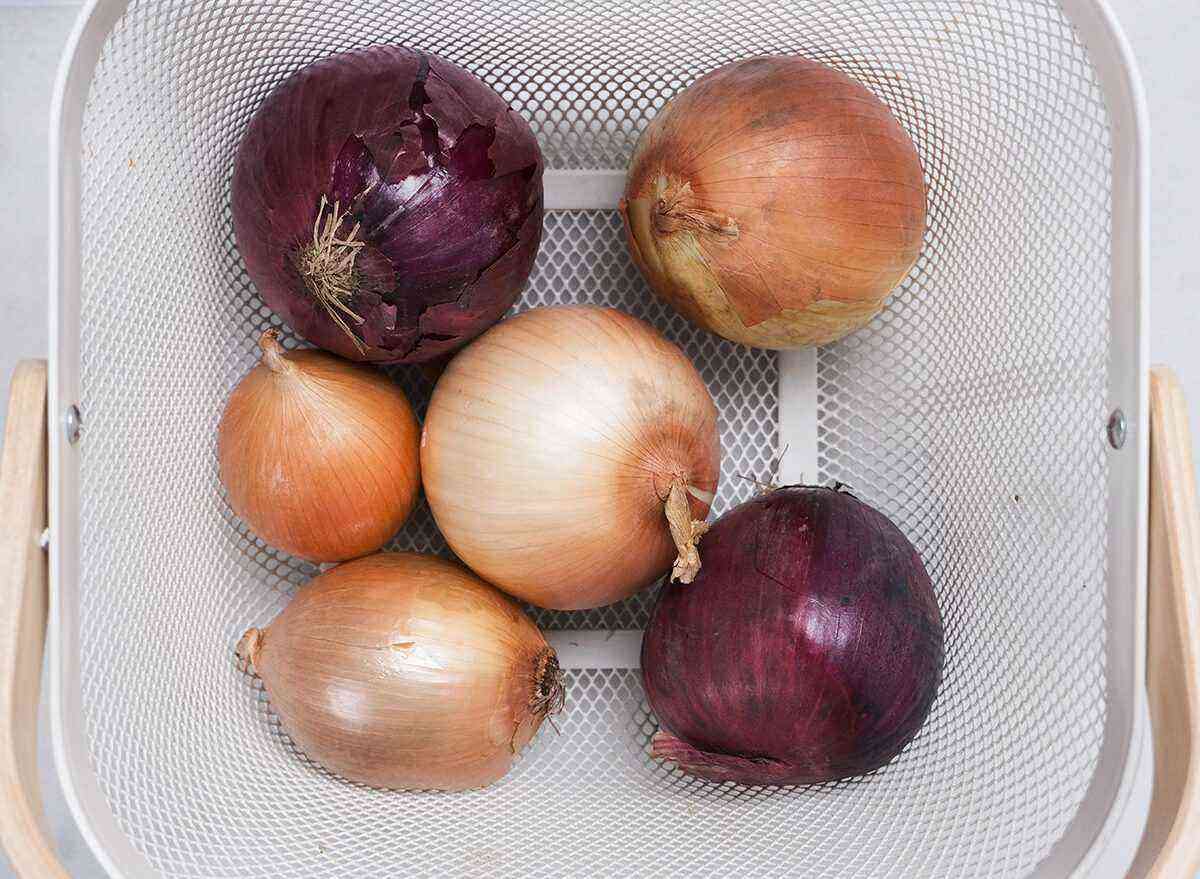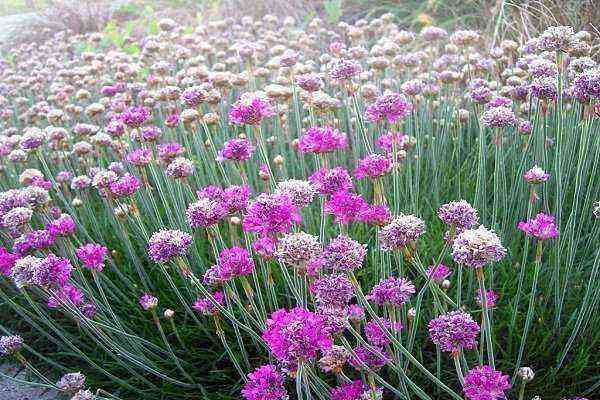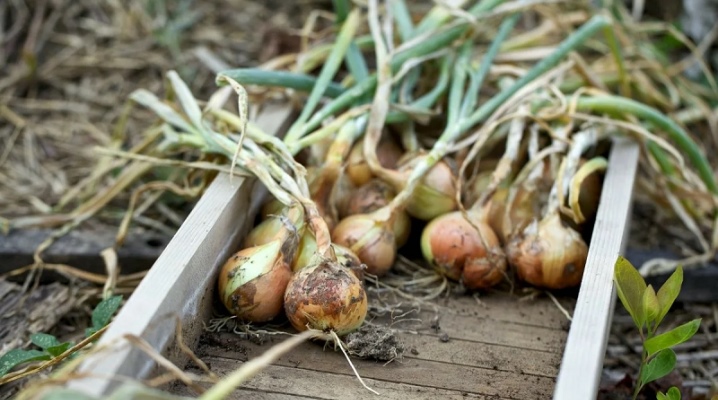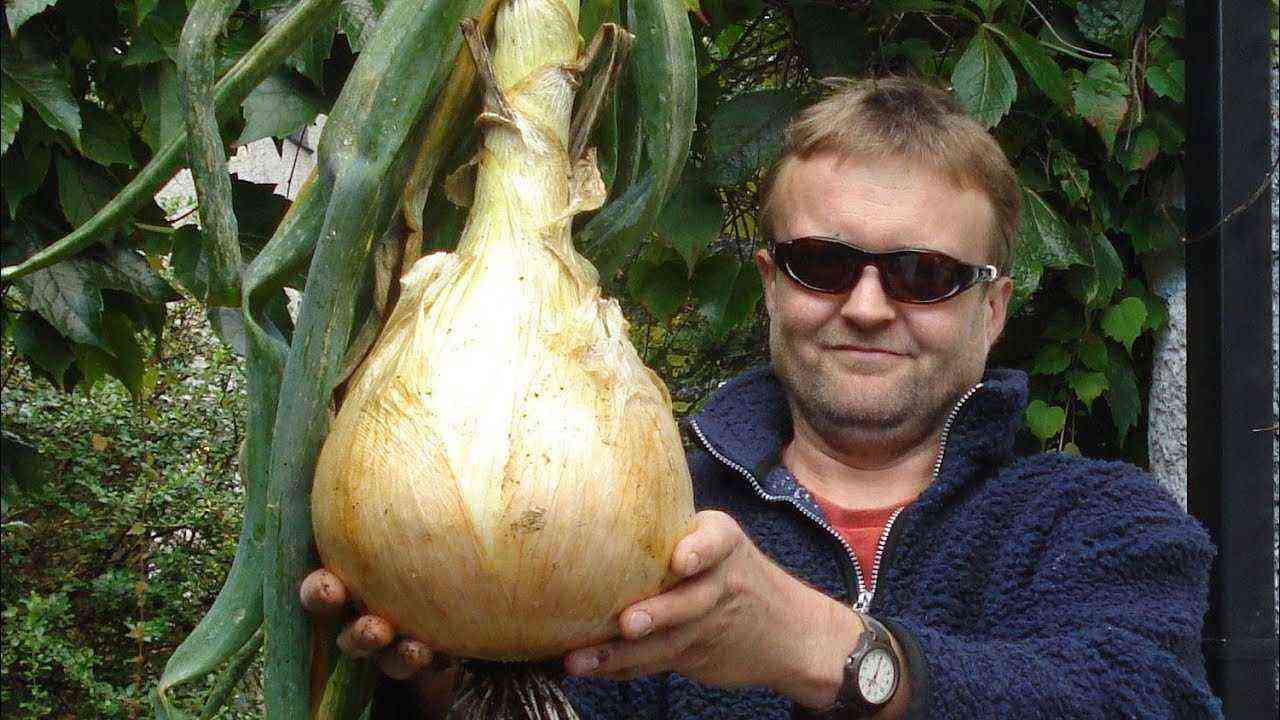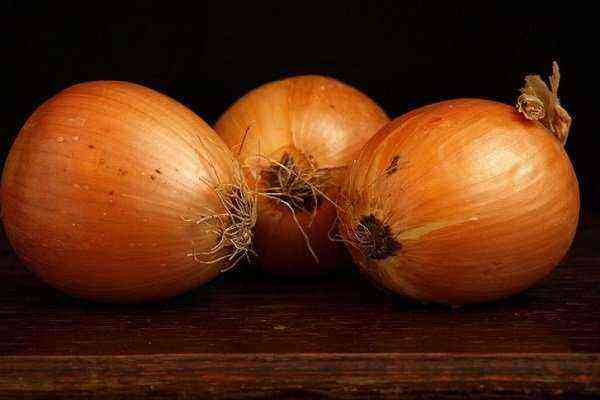Onions can be affected by various diseases and pests, which causes the plant to rot and turn yellow. Also, this problem can be provoked by a violation of the rules of agricultural technology or storage of the crop. Next – about the problems of decay and their solution.
Agrotechnical causes of yellowing and rotting of onions
Not always the yellowing of the leaves and the decay of the onion turnip indicate that the plant is affected by a disease or pests. The reason may be a violation of agrotechnical measures for fertilization, irrigation, adverse weather conditions.
Too much moisture
Onion is a fairly moisture-loving crop. During the period of intensive growth and development, it requires maximum irrigation. The rate of feather and turnip formation depends on the amount of moisture in the soil. But already in the 2nd growing season, its excess leads to the development of putrefactive bacteria.
Preventive measures:
- compliance with irrigation technology;
- stop watering 2-3 weeks before the planned harvest.
Ways to deal with excess moisture:
- in case of abundant rainfall, cover the onion planting with a film;
- build drainage trenches – pour the bottom with sand, which serves as drainage, plant onions on the sand and sprinkle with a layer of earth (this method is ideal for clay areas).
Too much or too little fertilizer
When growing onions, like other crops, it is important to maintain a balance of nutrients. Deficiency or excess of each of them has a negative effect on the plant.
Symptoms:
- nitrogen deficiency causes onion feathers to become soft, pale and falling off;
- phosphorus – slows down the growth of the plant, the leaves become variegated, the maturation of the bulb is inhibited;
- potassium – the leaves turn slightly yellow, the tops twist and die, the lower leaves become corrugated, turn brown and dry, the bulb forms thin scales;
- Copper – thins the feather, makes the color pale, slows down the growth of the plant, thickens the neck of the onion;
- zinc – leads to dwarfism of plants, the leaves twist and spread on the surface;
- wrinkle – feathers are sharpened, young ones turn yellow, and older ones become gray-gray-green.
The reasons:
- nitrogen deficiency causes excessive watering, increased soil moisture;
- phosphorus – observed on clayey, poorly drained soils;
- potassium – results in the fixation of the element with soil, aggravated by high humidity, followed by heat;
- Copper – most often observed on peatlands, with excessive manure application;
- zinc – happens on soils with an acidity of pH 7,5-8;
- wrinkle – most often observed in closed ground.
Preventive measures:
- carefully select the site, control the acidity of the soil;
- do not apply manure and humus;
- strictly observe the amount and timing of the application of mineral fertilizers;
- organize soil drainage and removal of excess moisture.
Ways to deal with excess or lack of trace elements:
- With a lack of trace elements, wet top dressing is carried out with substances that the plant needs. Fertilizer is diluted in a bucket of water according to the instructions.
- If the plants are severely depleted, the fertilizer solution is made more concentrated than with planned top dressing, but not higher than 1%. Plants react immediately.
- With an excess of trace elements, it is almost impossible to help the plant. Partially, excess trace elements are washed out of the soil by water, so watering is the only salvation.
Non-compliance with crop rotation
The key to a rich harvest of any crop is the observance of crop rotation. Each of the crops grown on the site has its own effect on the soil. If you correctly select the predecessors, then you can minimize the harm of diseases and pests.
The main condition for organizing onion crop rotation is the return of the crop to the same place no earlier than after 3 years.
Symptoms:
- reduced resistance to diseases and pests;
- friability of bulbs;
- susceptibility to decay.
The reasons:
- planting onions in the same place more than 2 times in a row;
- the choice of a predecessor with diseases and pests characteristic of onions.
Preventive measures:
- The choice of predecessors, which were abundantly fertilized with organic fertilizers. The best are potatoes, cucumbers, cabbage, legumes, greens.
- Avoid planting onions after radishes, celery, carrots, leeks.
- Carefully select crops adjacent to onions. The best neighbor of onions is carrots, it is also good to plant parsley, celery and marigolds next to onion plantings.
Unsuitable weather conditions
From the rains, the bulbs rot, the greens wither, and from the heat, the feathers turn yellow and dry. The reasons for this are excess moisture or drying out of the soil.
Preventive measures:
- moderate watering when the heat is established;
- the use of covering material in rainy weather (as far as possible).
Causes of bacterial and fungal nature
Numerous diseases of a bacterial and fungal nature significantly reduce the yield of onions. Various types of rot, bacterial infections affect leaves, turnips and roots.
Cerkosporoz
The causative agent of the disease is the imperfect fungus Cercospora duddiae Welles. Overwinters in plant debris and seeds. Spread by wind and raindrops.
Signs of the disease:
- sharply defined rounded or irregularly shaped spots of grayish-brown color with a yellow border on the leaves;
- leaves turn yellow and gradually die off, reducing yields.
The reasons:
- wind and raindrops spread the infection during the growing season of plants;
- non-observance of cleanliness in the beds (plant residues are present);
- use of contaminated seed material.
Preventive measures:
- use high-quality planting material;
- treatment of planting material with fungicides;
- observance of crop rotation;
- treatment of seedlings with copper-containing preparations;
- removal of diseased plants from the garden;
- timely weeding;
- heat treatment of planting material by heating the seeds at a temperature of 40-45 degrees for 6-8 hours.
Treatment:
- Preparations Fitosporin, Fito-plus, Bordeaux liquid, blue vitriol;
- An infusion of fermented grass is also used. Grind the grass (without soil), fill half a bucket with it, fill it with hot water. After a few days, strain and process the beds.
- Fermented milk products are diluted 1:10 with water and processed in the evening.
Do not use leftover onions in compost heaps or as fertilizer. At the slightest sign of putrefactive diseases, the affected specimens are disposed of outside the beds.
Donets rot (fusarium)
The causative agent of the disease is the phytopathogenic fungus Fusarium oxysporum f. sp. It develops at high soil temperatures.
Signs of the disease:
- twisted and yellowed leaves;
- the root system turns brown, becomes hollow in places;
- in the section on the lower layer of the bottom – a watery brown spot;
- the root system can rot, the bulbs are easily removed from the soil.
The reasons:
- moving contaminated soil on inventory;
- contaminated irrigation water or planting material (onion sets);
- damage to roots, bottoms or bulbs by onion fly larvae or other insects.
Preventive measures:
- planting resistant varieties;
- observance of crop rotation;
- fertilizer application control;
- before storage, onion treatment with Fitosporin;
- cleaning the bulbs from the top layer of scales;
- dressing of seed material in a solution of Fundazol or Quadris;
- Once a week, water for irrigation is replaced with a solution of any fungicide;
- in autumn, the soil is treated with such preparations as Ridomil-Gold, Acrobat-MC.
Treatment difficult due to the delay in diagnosing the disease. Most often, the disease becomes known when irreversible consequences began. Therefore, be sure to follow preventive measures.
White rot
The causative agent of onion white rot is the pathogenic fungus Sclerotium cepivorum Berk. It affects not only crops, but also poses a threat to the harvested crop during storage.
Signs of the disease:
- seedlings turn yellow and die;
- a white fluffy coating of mycelium (mycelium) appears on the roots and scales;
- wet rot develops, “poppy seeds” – sclerotia – appear on the surface of the affected area.
The reasons:
- violation of the irrigation system or rainy summer;
- use of infected and low-quality planting material;
- untimely removal and destruction of infected plants from the field.
Preventive measures:
- observance of crop rotation;
- maintaining the humidity regime during the onion growing season;
- use of healthy and high-quality planting material;
- treat planting material with copper-containing preparations.
During treatment water the onion beds with whey – dilute 1,5 teaspoons of copper sulfate in 1,5 liters of whey and add 3,5 liters of water. In extreme cases, systemic fungicides are used:
- Fundazol;
- Hom;
- Ordan;
- Get used to it.
Cervical decay
Neck rot is caused by the spore Botrytis allii. In conditions of high humidity, rapid reproduction of spores occurs on dead and decaying plant remains. In rainy and warm weather, spores are carried everywhere by wind and raindrops.
The disease is detected in most cases 1-2 months after storage.
Signs of the disease:
- the affected neck is soft and porous;
- there are depressed spots on the upper scales;
- the bulbs are covered with gray mold with black patches;
- scales wrinkle;
- the bulb dries up.
The reasons:
- wet summer, watering during the ripening of the bulbs;
- excessive application of organic and nitrogen fertilizers;
- non-observance of agrotechnical sowing dates (early onion planting dates are recommended);
- thickening of crops;
- non-observance of cleaning deadlines (delay in cleaning work often coincides with inclement weather);
- storage violation.
Preventive measures:
- application of manure and nitrogen fertilizers for crops;
- adherence to landing dates;
- prevent thickening of plants;
- observance of terms of cleaning;
- preparation for storage (dry, remove dried leaves);
- destruction of plant residues after harvesting.
At the first symptoms of neck rot, water the beds with 1% Bordeaux mixture (100 g diluted in 10 liters of water). Also watered with Kvardos (8 ml of the drug diluted in 10 liters of water).
Downy mildew (perinospora)
One of the most dangerous diseases. It is caused by the phytopathogenic fungus Peronospora destructor. During wet weather, there is a rapid process of development and sporulation. Wind and rain carry the spores everywhere.
Onions are affected in any period of the growing season of the plant. As a result of the disease, the yield decreases, the ripening and keeping quality of the crop worsens.
Signs of the disease:
- in the first 4 weeks, the feathers of such an onion do not develop well, turn pale, then turn yellow and bend;
- in dry weather, the leaves are covered with pale green oval spots, in wet weather – with a gray-purple bloom (fungal spores).
The reasons:
- excessive watering;
- adverse weather conditions;
- accumulation on the site of post-harvest plant residues.
Preventive measures:
- use high-quality planting material;
- treatment of planting material with fungicides;
- observance of crop rotation;
- treatment of seedlings with copper-containing preparations;
- removal of diseased plants from the garden.
In the fight against powdery mildew, the beds are treated with an interval of 7-8 days with the microbiological preparation Fitosporin-M (15 ml / 10 l of water), 1% copper oxychloride, Bordeaux liquid or a mixture of copper sulphate.
Folk remedies are also used:
- Wood ash, weed tincture (any weeds are poured into a bucket, infused for 5 days, filtered and watered).
- Dairy products containing lactic acid bacteria have a detrimental effect on fungal spores. For irrigation, dilute whey, yogurt in water 1:10.
Pest infestation
Pests are a big threat. Even a slight damage to the bulb entails the development of diseases, yellowing or rotting of the vegetable. Harmful insects not only damage the crop, but cause food allergies in humans.
Onion Mite
A pest of the class of arachnids, family of flour mites. A very resilient insect. The onion mite can be without food for a long time or feed on decaying vegetation residues. At low or high temperatures falls into a state of suspended animation. The powerful sucking mouthparts of the tick suck moisture out of onion scales.
Signs of the disease:
- stem deformation;
- the appearance of light spots on the leaves;
- at the time of the “occupation” of plantings by females, the plants are covered with “bloom” – tick bodies;
- the bulb is dehydrated and shrinks;
- often plants are affected by rot and mold.
The reasons:
- failure to take measures for the processing of planting material;
- ignoring the sanitization of storage facilities;
- accumulation of plant residues in the garden;
- non-compliance with the terms of disembarkation;
- violation of agrotechnical measures for tillage.
Preventive measures:
- creating a grass barrier;
- treatment with herbal decoctions of nettle;
- autumn digging of the soil;
- disinfection of storage rooms;
- warming up the planting material for one week;
- treatment of seed material with colloidal sulfur before planting.
The fight against onion mites with folk remedies and general insecticides does not bring tangible results. When using single-acting drugs, ticks develop immunity.
Onion with secretive trunk (weevil)
The onion secretive trunk is a black beetle 2-2,5 mm long. With an elongated proboscis, it sucks the juice from the plant. The larvae gnaw the onion from the inside.
Signs of the disease:
- the plant becomes covered with silvery spots and dies;
- at high humidity, an olive-colored coating is observed.
The reasons:
- non-compliance with agrotechnical measures for the care of crops;
- failure to ensure sanitary conditions in the garden (accumulation of vegetation residues).
Preventive measures:
- planting onions in well-ventilated ridges;
- loosening and weeding beds;
- watering the aisle with water with the addition of ground hot pepper, wood ash, dry mustard;
- soil treatment with a mixture of wood ash, red pepper or dry mustard (2: 1);
- treatment of plantings with Karbofos (60 g per 10 l of water);
- as a bait, plant onions between the beds (as the infection progresses, the bait is cut off and removed from the garden);
- cleaning the remains of vegetation from the beds in the fall.
Fighting methods:
- during the growing season, they are treated with a solution of Karbofos (60 g per 10 liters of water). A liter of solution is enough for 10 square meters. m landings.
- Lay out burlap ribbons (10 cm wide) in the evening, wrapping them around the bulbs. In the morning, remove the tapes in which the pest gets entangled.
Onion thrips
Onion thrips (Thrips tabaci) – a small insect 0,8 mm long, brown in color, has fringed wings. The larvae are greenish in color and do not have wings. Thrips and its larvae feed on onion juice.
They hibernate in the upper layers of the soil or plant remains. Females lay eggs in early spring. The larva has a diet similar to that of an adult. The peak activity of thrips is dry hot weather.
Signs of the disease:
- whitish and silvery spots are present on the leaves;
- leaves are twisted, turn yellow and wither.
Causes:
- non-compliance with crop rotation;
- violation of agrotechnical measures;
- violation of sanitary measures for preparing seed material for planting.
Preventive measures:
- compliance with agrotechnical measures;
- thermal disinfection of planting material (exposure in water 40-45°C for 10 hours);
- soaking planting material in a solution of sodium nitrate for 24 hours;
- drying onions before storing at a temperature of 35-37 degrees for a week;
- cleaning plant residues from the garden;
- laying traps between plants;
- planting marigolds around the onion beds;
- treatment of beds with infusion of celandine (cut stems of celandine infused in water for 48 hours).
Fighting methods:
- lay out cardboard strips painted blue and smeared with pest glue;
- treat plantings with an infusion of onions and garlic (1 tbsp chopped onion or garlic per 1 glass of water);
- insist tobacco leaves in a small amount of water, leave the filtered infusion for another 3 days, dilute 1: 2 in water and process the plantings.
Lukovaâ flies
A gray insect that looks like an ordinary fly. Lays eggs at the end of May in the upper scales of the bulb, plant or in the soil. The larvae feed on fleshy onion scales. During the summer, three offspring of a fly grow, the bulb rots. And the larvae are the most dangerous threat.
Onion fly larvae live not only in onions, but also in garlic and flower bulbs.
Signs of the disease:
- the bulb rots;
- leaves turn yellow and die;
- a putrid smell appears on the beds.
The reasons:
- non-compliance with crop rotation;
- violation of agrotechnical measures in the form of autumn digging;
- infected planting material;
- neglect of disinfection of planting material.
Preventive measures:
- planting onions next to carrot beds (the specific smell of carrots repels an onion fly);
- soaking seeds before planting in saline;
- watering with a solution of salt;
- regular loosening of the soil;
- pollination with tobacco infusion (leave 400 g / 10 l of water for 48 hours, boil for 2 hours, strain and add another 10 l of water, add 100 ml of liquid soap and process 3-4 times during the growing season);
- destruction of plant residues;
- late digging of the soil;
- liming the soil after digging and before planting.
Fighting methods:
- spraying plantings with infusions with a strong odor: mint, needles, valerian, tomato leaves, wormwood, lemon balm;
- sprinkle plantings with ash or tobacco dust, preferably after rain;
- water the onion beds with saline in 3 doses: the first watering – when the plant reaches 5 cm, the second – after 2 weeks, the third – 3 weeks after the second treatment.
Onion and stem nematode
Nematodes are a family of parasitic roundworms that lay their eggs in bulbs. Developing offspring feed on the juice of the bulb, which causes the death of the plant.
Signs of the disease:
- swollen and falsely twisted stem;
- in the context, the bulb is loose, the granular structure of fleshy scales;
- uneven thickening of the scales;
- the scales turn white, and then become brownish or gray;
- the bulbs are moist and have a garlicky smell.
The reasons:
- use of planting material infected with a nematode;
- nematode-infested soil;
- use of contaminated equipment (hoes, plows, harrows);
- infected residues of previous crops, weeds.
Preventive measures:
- compliance with crop rotation, return of crops affected by the nematode to the same place no earlier than after 3 years;
- tillage with a solution of Carbation (200 ml per 1 sq. m);
- selection of healthy, nematode-free seeds for planting;
- subject the seed material to heat treatment by immersing the bulbs in water with a temperature of up to 50 ° C for 8-10 minutes;
- watering for 2 weeks with a light pink solution of potassium permanganate;
- timely weeding of crops from weeds;
- introduction of dolomite flour into the soil for its deoxidation;
- to make the soil friable, peat and sand are added;
- during the growing season 2-3 treatments with Abamectin.
Ways of struggle:
- Folk remedies in the fight against nematodes are limited to heat treatments of planting material and plantings.
- Effective is the treatment with chemicals:
- Carbation;
- Chlorpicrin;
- Nemagon;
- Methyl bromide, etc.
Why do onions rot during storage?
Onions often rot not only during the growing season, but also during storage. If you find rotten or yellowed elements, sort out the crop and remove any damaged bulbs. Also eliminate the factors that provoked the problem.
Wet Bacterial Rot
The causative agent is the bacterium Dickeya chrysanthemi or Pectobacterium carotovorum subsp.
Signs of the disease:
- light to brown spots form around the root collar;
- the fabric becomes soft, when pressed, it releases liquid;
- there is a specific smell;
- in the context, healthy scales alternate with the affected ones;
- rot grows from the center of the bulb, and after a while all the scales become slimy.
Causes of the disease:
- poor choice of variety for planting;
- non-compliance with the regime of irrigation, temperature and nutrition.
The bacterium enters the bulb through:
- mechanical damage to the bulbs during tillage or during harvesting and transportation to the storage site;
- damage caused by insects to the bulb, or places of sunburn.
Preventive measures:
- compliance with crop rotation (this was discussed above);
- culling affected bulbs before planting;
- observance of agrotechnical methods of rotation (sowing dates, depth and distance of seed placement, irrigation and fertilizing regimen);
- compliance with the rules of harvesting (gather onions in dry weather during the period of mass lodging and yellowing of the feather);
- only healthy bulbs should be allowed for storage;
- compliance with the appropriate level of humidity and temperature during storage, as well as sanitary conditions in the room.
Black moldy rot (aspergillosis)
The causative agent of the disease is the fungus Aspergillus niger. Spread by air on contact.
Signs of the disease:
- blackening is formed in the neck area;
- the bulb becomes soft;
- the scales dry out, and black rot appears between them.
Causes of the disease:
- unripe and improperly prepared bulbs for storage are exposed to the disease;
- violation of storage conditions (elevated temperature and humidity, poor ventilation).
Preventive measures:
- treatment of planting material with fungicides;
- treatment of crops with Bordeaux liquid 3 weeks before harvesting;
- compliance with temperature and humidity conditions in storage rooms;
- eliminate damage to the bulbs in the form of abrasions.
Green moldy rot (penicillosis)
It is caused by pathogenic fungi of the genus Penicillium in a warm and humid environment. It appears 2-3 months after laying in onion storage areas.
Signs of the disease:
- a wet pale yellowish spot appears on the bulb, gradually covered with a blue-green bloom;
- on the section of the bulb there are yellow-brown or gray watery spots;
- there is a musty smell of mold.
Causes of the disease:
- mechanical damage;
- sunburn;
- frozen bulbs;
- high storage humidity.
Preventive measures:
- drying the crop before storing;
- compliance with the humidity regime during storage;
- prevent mechanical damage and freezing of the bulbs.
Antraknoz
The causative agent of the disease is the fungus Colletotrichum circinans. Heat and moisture are accomplices of the reproduction of candia of this fungal disease. And the wind and rain carry them around the site. At the storage site, the disease continues to develop.
Signs of the disease:
- concentric rings form around the neck of the bulb;
- small yellow spots form on the inner scales;
- the bulb shrinks and sprouts.
The reasons:
- the use of low-quality planting material;
- non-compliance with crop rotation;
- poor-quality preparation of the crop for storage;
- storage violation.
Preventive measures:
- planting onion varieties with golden and red integumentary scales;
- use of high-quality planting material;
- observance of crop rotation;
- observance of terms and methods of cleaning;
- treatment of planting material with fungicides.
When cultivating onions, remember that the sooner the cause of the “malaise” of the crop is identified, the higher the chances of saving the crop and preventing soil contamination. Strictly observe the agrotechnical terms of treatment against diseases and pests, so as not to leave them the opportunity to destroy the plants.
